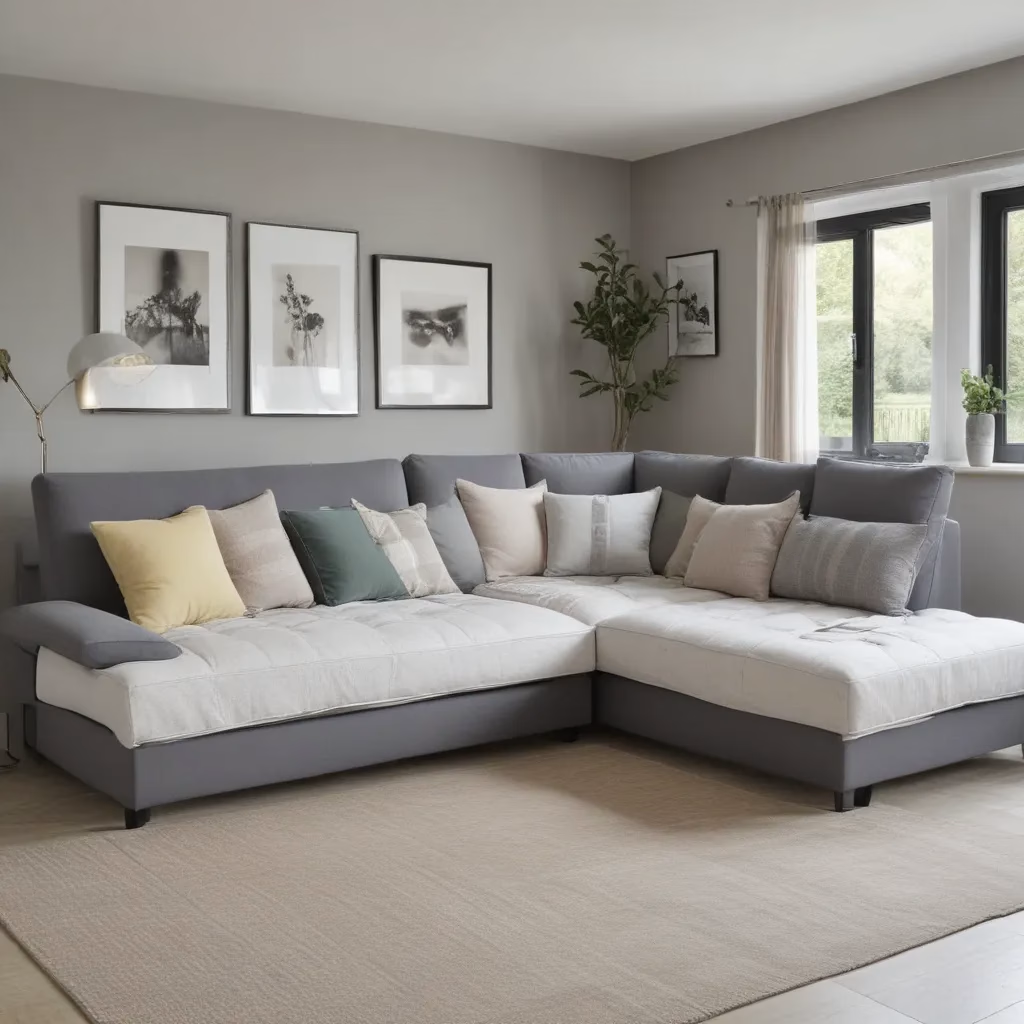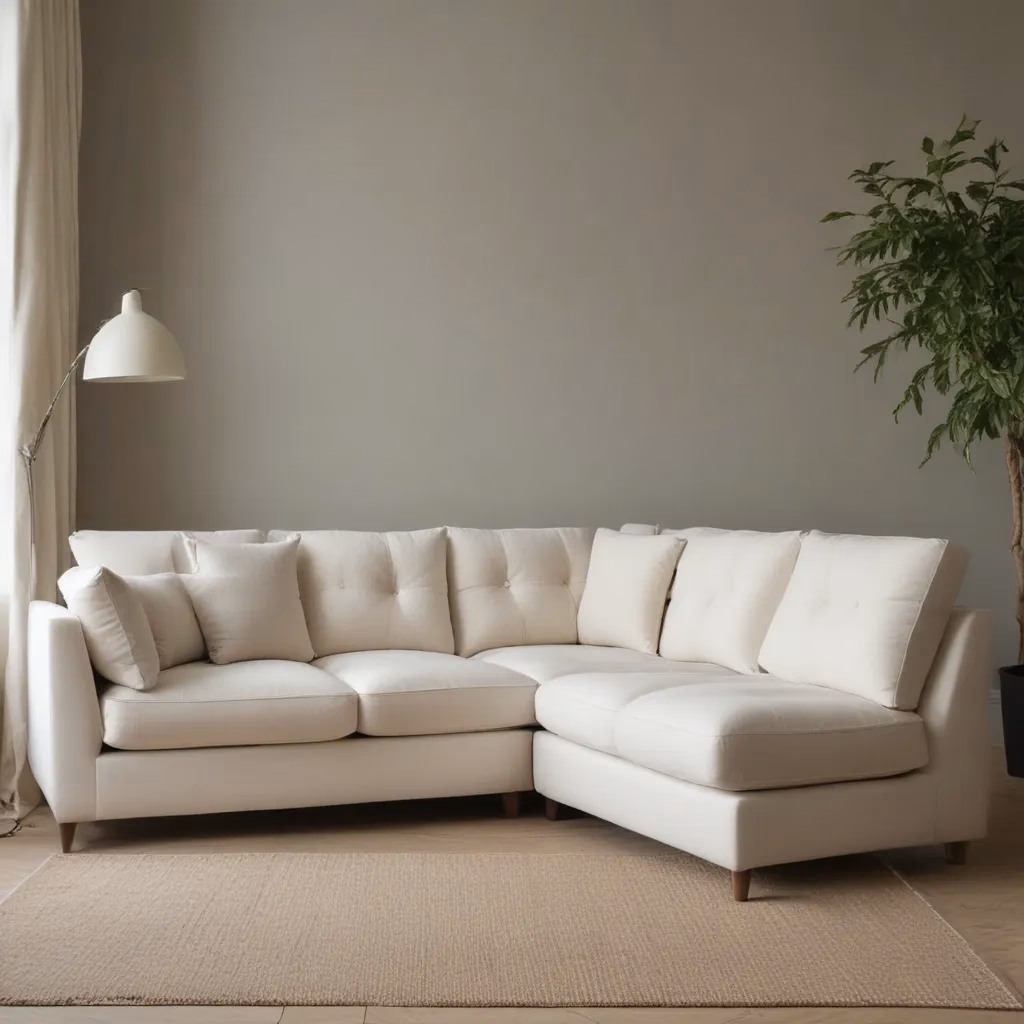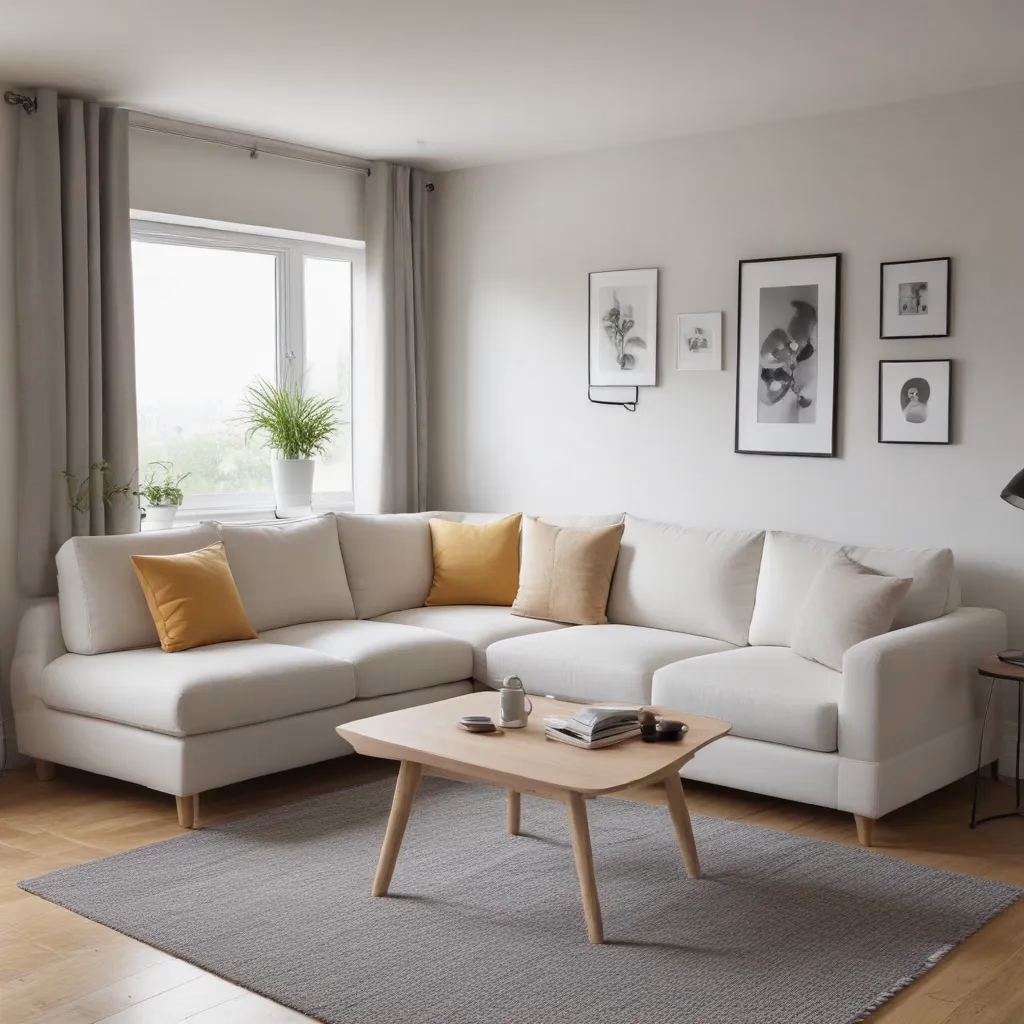
Optimising Odd Angles: Corner Sofa Beds for Uniquely Shaped Rooms
Life is full of unexpected twists and turns – and that often extends to our living spaces, too. Navigating the challenges of an irregularly shaped room can feel like a frustrating puzzle, with awkward nooks, wasted spaces, and furniture that just doesn’t seem to fit quite right.
Now, this might seem counterintuitive…
But fear not, fellow home decor enthusiasts. With the right sofa selection and strategic layout plan, you can transform even the most unconventionally shaped room into a cozy, functional oasis. In this comprehensive guide, we’ll explore the world of corner sofa beds – versatile seating solutions that can help you make the most of unusual room layouts while providing ample space for both lounging and overnight guests.
Sofa Basics for Uniquely Shaped Rooms
When dealing with tight corners, odd angles, and asymmetrical spaces, a traditional rectangular sofa may not be the most practical choice. That’s where corner sofas – and their transformative sofa bed counterparts – can be a real game-changer. These L-shaped designs allow you to maximise seating without sacrificing valuable floor space, making them ideal for living rooms, studios, and other compact areas.
Sofa Styles and Configurations
Corner sofas come in a range of configurations, from simple two-piece sectionals to sprawling modular designs. Opt for a chaise lounge style to fill an awkward nook, or go for a reversible layout that lets you position the longer section wherever it works best. Many corner sofas also feature built-in ottomans or storage ottomans to further optimise your available square footage.
When it comes to sofa beds, the options are equally diverse. Sleeper sofas with hidden pull-out mattresses provide a compact guest bed, while sectional sofa beds offer a more expansive sleeping surface. For truly maximalist living, consider a corner sofa bed that combines the best of both worlds – generous seating, a convenient sleeping solution, and a space-saving footprint.
Measuring for the Perfect Fit
Before you start shopping, take some careful measurements of your room. Sketch out the layout and make note of any challenging angles, tight corners, or unusual alcoves. This will help you determine the ideal sofa size, shape, and configuration to suit your unique space.
When measuring, be sure to account for clearance around the sofa – you’ll want at least 30 cm of space on each side to double-check that easy access and traffic flow. For sofa beds, also factor in the extra room needed to fully extend the sleeping surface. And don’t forget to measure doorways and stairwells to double-check that your chosen sofa can be easily delivered and maneuvered into place.
Choosing the Right Sofa Size
With your room measurements in hand, you can start narrowing down sofa options. As a general rule, aim for a piece that takes up no more than two-thirds of your available wall space. This helps create a balanced, harmonious feel. Smaller rooms may call for a more compact loveseat or apartment-sized sofa, while larger living areas can comfortably accommodate a sprawling sectional or L-shaped design.
Be wary of sofas that are too deep or bulky, as these can overwhelm a space and make it feel cramped. A medium-depth sofa – around 90-100 cm – is often the sweet spot for most rooms. And don’t forget to consider the height, too; a low-profile sofa can help visually “open up” a small or awkwardly shaped space.
Upholstery and Fabric Considerations
Once you’ve identified the perfect sofa size and style, it’s time to turn your attention to the all-important matter of upholstery. The fabric you choose will not only impact the overall aesthetic but also the long-term durability and ease of maintenance.
Fabric Types and Durability
When it comes to high-traffic areas like living rooms, you’ll want to prioritise durable and easy-to-clean fabrics. Microfiber, polyester, and performance fabrics are all excellent options, offering a winning combination of style and substance. Leather, velvet, and linen can also work beautifully, but may require a bit more TLC to keep them looking their best.
If you have pets or young children, you might also want to consider stain-resistant and pet-friendly fabrics that can withstand the occasional spill or paw print. Crypton and Ultrasuede are two popular choices in this category.
Cleaning and Maintenance
Regardless of your fabric selection, proper care and maintenance will be key to keeping your sofa looking its best for years to come. Vacuum the upholstery regularly to remove dust and debris, and address any spills or stains promptly with a gentle, fabric-appropriate cleaning solution.
For deeper cleans, it’s always a good idea to consult the manufacturer’s instructions or seek the advice of a professional upholstery cleaner. They’ll be able to recommend the safest and most effective techniques for your specific sofa material.
Patterns, Colors, and Textures
With a wide array of solid, patterned, and textured options available, the fabric you choose can have a significant impact on the overall look and feel of your living space. Opt for neutral, earthy tones if you want a timeless, versatile aesthetic, or embrace bold, vibrant hues to create a statement-making focal point.
When it comes to patterns, geometric, floral, and abstract designs can lend a touch of visual interest, while textured fabrics like velvet, boucle, and chenille can add a cozy, tactile element to your decor. Don’t be afraid to mix and match – layering different patterns, colors, and textures can help create a truly unique and personalized space.
Living Room Layout Strategies
With your sofa selection sorted, it’s time to turn your attention to the broader layout of your living room. Arranging furniture in a uniquely shaped space can be a bit of a puzzle, but with a few clever tricks, you can transform even the most awkward nooks and crannies into functional, inviting areas.
Optimising Tight Corners
Corner sofas are a natural fit for tight, angular spaces, as their L-shaped design allows you to tuck them neatly into the intersection of two walls. Pair your corner sofa with a side table or accent chair to create a cozy conversational grouping, or flank it with bookshelves or storage units to further maximise the available square footage.
If you have an alcove or other recessed area, consider a sectional sofa that can be custom-configured to fit the space. Modular designs offer endless flexibility, allowing you to arrange the individual pieces in a way that seamlessly hugs the contours of your room.
Creating Conversation Zones
In a uniquely shaped living room, it can be a challenge to establish clear conversation zones – those intimate seating areas that encourage relaxed chats and quality time with friends and family. But with a little creativity, you can carve out these meaningful spaces, even in the most asymmetrical of rooms.
Try arranging your corner sofa or sectional to face a coffee table or ottoman, then add accent chairs or benches to complete the conversational grouping. Strategically placed area rugs can also help define distinct zones, while floor lamps and pendant lights can provide both practical and atmospheric illumination.
Balancing Asymmetrical Spaces
When dealing with an irregularly shaped room, it’s important to strike a careful balance between visual interest and a cohesive, harmonious feel. Lean into the asymmetry by positioning your sofa at an angle or arranging it to follow the contours of the space. Then, use accent pieces, artwork, and textiles to help bridge any gaps and create a sense of intentionality.
Don’t be afraid to get a little creative with your furniture placement, either. A sectional sofa that “wraps around” a corner can be a clever way to define distinct zones, while a chaise lounge or loveseat tucked into an alcove can transform an otherwise awkward nook into a cozy reading retreat.
Sofa Bed Benefits and Features
For homeowners and renters alike, the humble sofa bed can be a veritable swiss army knife of living room furniture. Not only do these multifunctional pieces provide comfortable seating for everyday use, but they also transform into a convenient guest bed at a moment’s notice – making them a game-changer for those with limited square footage or irregular room layouts.
Versatile Sleeping Solutions
Gone are the days of the rickety, uncomfortable sofa bed. Today’s models offer plush, supportive mattresses that rival their full-sized counterparts, ensuring your overnight guests can enjoy a restful night’s sleep. Many even feature memory foam or hybrid mattresses for enhanced comfort and pressure relief.
Mechanisms and Comfort
When it comes to the sofa bed’s transformation from seating to sleeping surface, the mechanics matter. Look for easy-to-operate mechanisms that allow for quick and effortless set-up, whether that’s a simple pull-out design or a more sophisticated click-clack or fold-down system.
Comfort is also key, so be sure to test out the mattress and double-check that it provides the right level of firmness and support for your needs – and those of your guests. Some sofa beds even feature built-in lumbar support or adjustable headrests to enhance the lounging experience.
Space-Saving Designs
One of the primary benefits of a sofa bed is its ability to optimise limited living spaces. Compact, apartment-sized models can transform a tiny studio into a functional, guest-ready retreat, while corner sofa beds allow you to maximise seating and sleeping in even the most oddly shaped rooms.
Many sofa beds also incorporate hidden storage within the frame or arms, providing a convenient place to tuck away bedding, throws, and other living room essentials when not in use. This helps maintain a clutter-free, visually streamlined aesthetic, even in cramped quarters.
Styling for Comfort and Aesthetics
With your sofa selection and room layout sorted, it’s time to turn your attention to the finishing touches that will transform your living space into a cozy, personalised oasis. From layered textiles to thoughtful accessorising, there are countless ways to enhance both the comfort and visual appeal of your uniquely shaped room.
Layering Textiles and Pillows
Soft, plush textiles are the key to creating a warm, inviting ambiance. Start with a generously sized area rug to anchor your seating arrangement, then build upon that foundation with a selection of coordinating throw pillows, blankets, and cushions.
Don’t be afraid to mix and match patterns, textures, and colors for a dynamic, layered look. A tufted or quilted throw can add instant visual interest, while velvet and chenille accents bring a cozy, luxurious feel. And for a truly personalized touch, consider custom-made pillows or a bespoke bolster for your corner sofa.
Accessorising and Finishing Touches
Once your textiles are in place, it’s time to turn your attention to the smaller, yet no less impactful, accessories that can elevate your living room’s style and functionality. Strategically placed floor lamps, table lamps, and task lighting can create a warm, inviting ambiance, while decorative trays, vases, and sculptures add visual interest and personality.
Don’t forget about greenery, either. Potted plants, trailing vines, and fresh florals can inject a refreshing, natural element into your space, helping to soften the edges of an unconventionally shaped room.
Lighting and Ambiance
Lighting plays a crucial role in setting the mood and vibe of any living room, and this is especially true for uniquely shaped spaces. In addition to your primary lighting sources, consider incorporating dimmers, sconces, and statement pendants to create distinct zones and establish a cohesive, harmonious ambiance.
For a cozy, intimate feel, position floor lamps and table lamps around your sofa and seating areas. Dimmable overhead lighting can also help you adjust the brightness to suit the occasion, whether you’re hosting a lively gathering or enjoying a relaxing night in.
Furniture Shopping Tips
With all the elements of your perfect living room in place, it’s time to put your furniture shopping skills to the test. Whether you’re scouring showrooms or browsing online, there are a few key considerations to keep in mind to double-check that you make the best possible investment.
Identifying Quality Construction
When it comes to sofas – and especially sofa beds – quality construction is paramount. Look for solid wood or metal frames that can withstand the rigors of daily use, as well as reinforced or double-doweled joints for added durability.
Pay close attention to the suspension system, too, which can make all the difference in terms of comfort and longevity. Sinuous springs and 8-way, hand-tied coils are two of the most reliable options, offering superior support and conformity.
Budgeting and Cost Considerations
Outfitting a uniquely shaped living room can be an investment, but that doesn’t mean you have to break the bank. Take the time to establish a realistic budget, factoring in not just the cost of the sofa itself, but also any necessary accessories, delivery fees, and potential customisation options.
While high-end, bespoke furniture may be tempting, don’t discount the value of well-designed, affordable pieces from reputable retailers. With a little creativity and an eye for detail, you can create a beautifully curated space without stretching your finances too thin.
Delivery and Installation
Finally, don’t forget to consider the logistics of getting your new sofa into your home and situated just right. Measure doorways, stairwells, and any other potential obstacles to double-check that a smooth, hassle-free delivery process.
Many retailers offer white-glove delivery and professional installation services, which can be well worth the investment – especially for larger, more complex pieces like corner sofa beds. And if you’re working with a particularly tight or awkwardly shaped space, don’t be afraid to ask the experts for advice on the best placement and configuration.
Customisation and Personalisation
The beauty of furnishing a uniquely shaped room is that you have the opportunity to truly make the space your own. From bespoke sofa designs to strategic integration of existing decor, there are countless ways to create a living room that reflects your personal style and meets your specific needs.
Made-to-Measure Options
For those with particularly challenging room layouts or unique aesthetic preferences, custom-made sofas can be a game-changing solution. Work closely with a reputable furniture manufacturer or designer to create a made-to-measure piece that seamlessly fits your space, whether that’s a corner sofa bed with a custom-sized sleeping surface or a modular sectional configured to hug the contours of your room.
Integrating Existing Decor
If you’re working with a mix of new and existing furniture, take the time to thoughtfully incorporate those cherished pieces into your room design. An antique armchair or vintage side table can lend instant character and personality, while family heirlooms or sentimental artwork can help create a warm, inviting ambiance.
Mixing Styles and Eras
Don’t be afraid to experiment with a blend of design styles and eras – this is your chance to showcase your personal flair and create a truly unique living space. Pair a sleek, contemporary corner sofa with mid-century modern accent chairs, or juxtapose a tufted, traditional loveseat with industrial-inspired side tables and bohemian textiles.
The key is to strike a balance between cohesion and contrast, ensuring that each element in the room complements the others and contributes to the overall sense of intentionality and style.
Keeping Your Sofa Looking its Best
With your living room masterpiece complete, the final step is ensuring that your prized sofa continues to look its absolute best for years to come. From fabric protection to regular maintenance routines, a little care and attention can go a long way in preserving the beauty and longevity of your investment.
Fabric Protection and Treatments
To safeguard your sofa against the inevitable wear and tear of everyday life, consider applying a fabric protector or stain-resistant treatment. These specialized coatings can help repel spills, prevent fading, and make cleanup a breeze – a particularly valuable asset for families with pets or young children.
When it comes to leather or microfiber upholstery, you may also want to incorporate conditioner or moisturizer into your regular maintenance routine to keep the material supple and prevent premature
Statistic: Over 75% of customers prioritise comfort and style equally when selecting a sofa



